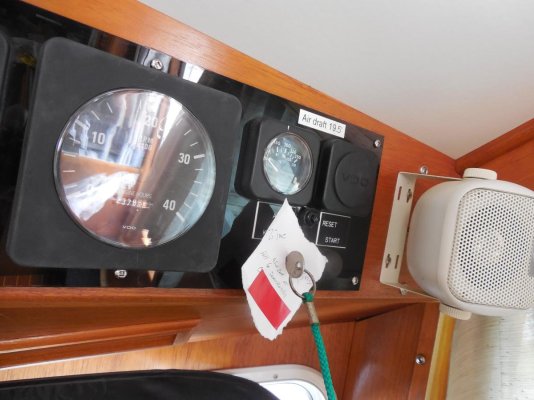Vashon_Trawler
Guru
- Joined
- Jun 13, 2013
- Messages
- 598
- Location
- USA
- Vessel Name
- M/V Sherpa
- Vessel Make
- 24' Vashon Diesel Cruiser
Well, I did it this time... fortunately, no damage to my engine but I learned a good lesson. Let me tell the tale!
Two weeks ago, I had flushed my Volvo MD2030 with fresh water via the top of my sea strainer. Fast forward to yesterday morning. My wife and I decided to take a Saturday "Mother's Day" cruise from St. Petersburg to John's Pass and back. I conducted all my pre-launch checks to include opening the sea-cock.
We left the marina and were almost in the channel when I noticed my engine temperature was abnormally high. I immediately throttled back and turned around. The engine alarm activated so I made the decision to immediately find the first safe dock to avoid risking damage to my engine. I wound up tying up at Eckerd College's Search and Rescue.
The alarm only activated for a minute or two but the radiator cap released pressure a few moments after tying up. I checked the engine compartment and expected that the impellor failed or the strained was clogged. After a quick inspection I noticed that I failed to close the sea strainer top two weeks ago! Stupid, stupid me!
Well, the impellor was okay and the engine ran fine afterwards. I returned to the marina and checked everything over. No peculiar sounds such as knocking or pinging, white smoke from the exhaust, or signs of a headgasket failure. Exhaust hose looked good, lots of water was ejecting from the exhaust exit, and the engine ran cool afterwards. Long story short, we did complete our trip that day and the engine ran fine for five hours with no issues. I'm sending a sample of oil off to be tested for peace of mind.
I learned my lesson after this event! Thirty plus years on the water and one can still make careless mistakes
Two weeks ago, I had flushed my Volvo MD2030 with fresh water via the top of my sea strainer. Fast forward to yesterday morning. My wife and I decided to take a Saturday "Mother's Day" cruise from St. Petersburg to John's Pass and back. I conducted all my pre-launch checks to include opening the sea-cock.
We left the marina and were almost in the channel when I noticed my engine temperature was abnormally high. I immediately throttled back and turned around. The engine alarm activated so I made the decision to immediately find the first safe dock to avoid risking damage to my engine. I wound up tying up at Eckerd College's Search and Rescue.
The alarm only activated for a minute or two but the radiator cap released pressure a few moments after tying up. I checked the engine compartment and expected that the impellor failed or the strained was clogged. After a quick inspection I noticed that I failed to close the sea strainer top two weeks ago! Stupid, stupid me!
Well, the impellor was okay and the engine ran fine afterwards. I returned to the marina and checked everything over. No peculiar sounds such as knocking or pinging, white smoke from the exhaust, or signs of a headgasket failure. Exhaust hose looked good, lots of water was ejecting from the exhaust exit, and the engine ran cool afterwards. Long story short, we did complete our trip that day and the engine ran fine for five hours with no issues. I'm sending a sample of oil off to be tested for peace of mind.
I learned my lesson after this event! Thirty plus years on the water and one can still make careless mistakes

Last edited:


